|
|
|||
|
(Back to Preceding Week; on to Next Week) |
|
|
|
OCTOBER ANT SWARM
When we gazed out at the placid waters of Hilton Pond this week, we were reminded autumn is a time of mixed emotions for naturalist bird banders. Like everyone else, we're enthralled with fall colors as chlorophyll fades and the long-hidden carotenoid oranges and yellows and reds become brilliantly apparent in leafy canopies above. But every time we open our mist nets we're also perturbed by swarms of colorful leaves that fall toward the ground; in almost diabolical fashion many aim straight for the mesh, where light breezes cause them to twist and snare even further. We net far more leaves than birds in autumn--it seems by a million-to-one ratio--but the arrival of new avian species from the north ALMOST makes it worth the trouble of constantly clearing our nets of all that fallen foliage.
All text & photos © Hilton Pond Center Leaves aren't the only things swarming come fall, as we learned on 21 October when backlit against dark pond waters we could see lots of small insects fluttering skyward from a location near the old farmhouse at Hilton Pond Center. These were not rapid flyers; in fact, they seemed to labor heavily as they gained enough speed to stay airborne. Curious about what they might be, we stepped outside with camera in hand and headed toward the action. We didn't get very far, however, for just as we stepped off the back deck we saw a huge, flat mass of insects writhing on the ground before us. It took only a moment to realize we had encountered an ant colony engaged in a fall mating ritual. There were literally thousands of ants spread across less than a square yard of leaf litter, and they were in constant motion. Unlike the ants one usually sees crawling about, however, nearly all the insects in view had wings.
All text & photos © Hilton Pond Center After snapping the top photo hand-held (see above), we went back inside to fetch our trusty tripod and set it directly above the insect multitude. We lowered our camera--now fitted with a macro lens--progressively closer to the ants, firing off exposures at each level. We also had to pause fairly often to brush ants from two sets of legs--ours and the tripod's--as they ascended. Although we were wearing sandals, none of the ants attempted to bite, but they certainly tickled. In the somewhat closer view just above we could see the hyperactive colony consisted of different sizes and colors of ants, nearly all of which bore two pairs of flat, membranous wings that glistened in the light.
All text & photos © Hilton Pond Center Moving closer still we noted three distinctly different ant types (above). The most numerous had the smallest bodies, even though their wings made them look bigger; the biggest ants were twice as large, with formidable looking mandibles. Both of these morphs were dark reddish-brown, although there was some variation in just how dark they were and the smallest were darkest--almost black. What surprised us most was the smattering of amber-colored medium-sized ants that wandered about, occasionally stopping to stroke other ants with their angled antennae. By the time we got this close to the swarm we had an idea of what kind of ants they might be. Even though we were very careful not to step on colony members, the assemblage still emanated a faint but distinctive lemony odor--the telltale sign of the Citronella Ant, Lasius claviger (formerly Acanthomyops claviger). L. claviger is one of the most common and widely distributed of the eastern members of its genus. In the Carolinas, swarms of L. claviger seem to be most obvious on warm October afternoons following a cold, wet spell. No one knows for sure just what triggers a swarm, but nests across the Piedmont often erupt within a few hours of each other. (We wonder if swarming in late October is an adaptation that avoids aerial feeding insectivores such as swifts and swallows that have already departed the Carolinas for their wintering grounds.) Newly expupated queens leave the nest, followed by potential mates that die shortly thereafter. Once fertilized, the queen seeks out the nest of a related species--L. alienus--and somehow gains entry. In this "foster colony," the newly arrived queen enlists resident workers to care for her eggs and larvae that eventually metamorphose into her own L. claviger workers. Some myrmecologists (i.e., ant experts) believe the new generation of L. claviger workers then takes over the nest and, presumably, kills the original L. alienus queen.
All text & photos © Hilton Pond Center Not being trained in myrmecology, we're not completely certain how to fully interpret the scenario we witnessed outside the Hilton Pond farmhouse, but we'll give it a shot. (If we get it wrong or if you have additional Citronella Ant factoids to add, please contact INFO.) To start, we're guessing those few wingless ants making up the yellow caste (above) were sterile female workers from the old nest from which the swarm was emanating.
All text & photos © Hilton Pond Center We further suppose the smaller winged individuals (above) that comprised the largest subset in the swarm were males waiting for a queen to flee the masses. These particular ants were especially active in the ground swarm, moving about constantly. (Incidentally winged ants are known as "alates," from the Latin ala, meaning "wing.")
All text & photos © Hilton Pond Center The third caste represented in the swarm, then, must have been the winged virgin queens (above) preparing to depart, mate, and start new colonies of their own. We have found these inch-long reddish-brown ants beneath bark and old logs in mid-winter and noted swollen abdomens indicative of successful copulations back in the fall. Such gravid females undoubtedly await warmer weather when they can safely explore the neighborhood before infiltrating unsuspecting colonies of L. alienus. Each queen is believed to mate with multiple males--one way to assure health and genetic diversity in her offspring. Colonies of social insects such as bees and ants are complicated enough as it is. Thus, it's even more amazing to us nest parasitism is practiced by the queens of subterranean Citronella Ants that emerged this week to make up the big nuptial swarm at Hilton Pond Center. All text & photos © Hilton Pond Center
Comments or questions about this week's installment?
Thanks to the following fine folks for recent gifts in support of Hilton Pond Center for Piedmont Natural History and/or Operation RubyThroat: The Hummingbird Project. Your tax-deductible contributions allow us to continue writing, photographing, and sharing "This Week at Hilton Pond." (Please see Support if you'd like to make a gift of your own. You can also contribute by ordering an Operation RubyThroat T-shirt.)
Using Network for Good via Facebook's "Causes," 12 people have made contributions to "Help the Hummingbirds" in honor of Bill Hilton Jr.'s 63rd birthday and bringing the total to $519--short of the $1,260 goal but nice nonetheless. Even though 15 September 2009 has come and gone, you can still donate to this birthday cause by going to Facebook. "This Week at Hilton Pond" is written & photographed You may wish to consult our Index of all nature topics covered since February 2000. You can also use our on-line Hilton Pond Search Engine at the bottom of this page. For a free, non-fattening, on-line subscription to |
|
Make direct donations on-line via
Network for Good: |
|
|
Use your PayPal account
to make direct donations: |
|
|
If you like to shop on-line, you please become a member of iGive, through which more than 750 on-line stores from Barnes & Noble to Lands' End will donate a percentage of your purchase price in support of Hilton Pond Center and Operation RubyThroat. For every new member who signs up and makes an on-line purchase iGive will donate an ADDITIONAL $5 to the Center. Please sign up by going to the iGive Web site; more than 200 members have signed up to help. It's a painless, important way for YOU to support our on-going work in conservation, education, and research. |
|
|
SPECIES BANDED THIS WEEK: * = New species for 2009 WEEKLY BANDING TOTAL 17 species 44 individuals 2009 BANDING TOTAL 60 species (28-year avg. = 68.8) 1,643 individuals (avg. = 1,911) 28-YEAR BANDING GRAND TOTAL (since 28 June 1982, during which time 170 species have been observed on or over the property) 124 species 53,525 individuals NOTABLE RECAPTURES THIS WEEK (with original banding date, sex, and current age) Carolina Chickadee (2) Northern Cardinal (2) White-throated Sparrow (2) All text & photos © Hilton Pond Center
|
OTHER NATURE NOTES OF INTEREST --A bob-tailed Winter Wren on 22 Oct was only the 12th ever banded at Hilton Pond Center. That day we also caught our first Yellow-rumped Warblers of the year, followed by a Ruby-crowned Kinglet the next day and a Golden-crowned Kinglet and Hermit Thrush on 25 Oct. During the period we captured 17 species--seven of them new for 2009--a pretty good assortment this late in the year. All these "cold-weather" birds must mean winter is on the way. Again. This Week at Hilton Pond
NOW is the time to report your RTHU fall departure dates from the U.S. & Canada, and fall arrival dates for Mexico & Central America. Please participate.
|
|
|
|
(Back to Preceding Week; on to Next Week) Up to Top of Page Back to This Week at Hilton Pond Center Current Weather Conditions at Hilton Pond Center |
 You can also post questions for The Piedmont Naturalist |
Join the |
Search Engine for |
|
|
VistaPrint Discount Code

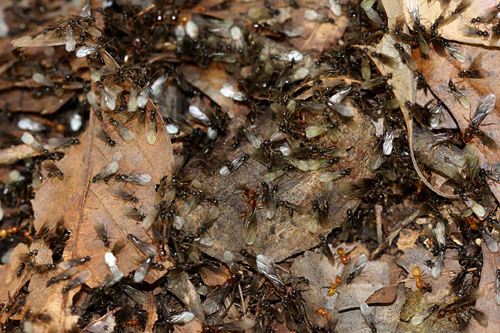

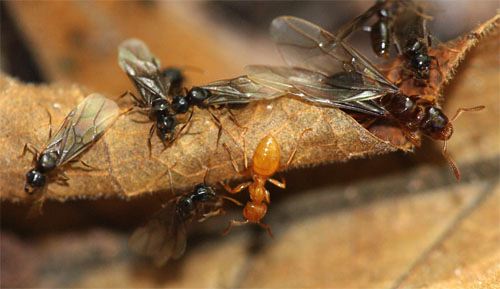
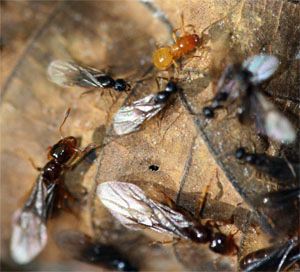 They occur in moist woodlands--often nesting beneath flat rocks or logs--and occasionally are dug up in suburban backyards during garden tilling. The nest typically has exposed plant rootlets growing throughout; these serve as a food source for sap-sucking aphids that exude sugar-rich droppings called "honeydew"--apparently the Citronella Ants' sole carbohydrate source. (Colony members may get proteins and fats from occasionally chowing down on an aphid or two.)
They occur in moist woodlands--often nesting beneath flat rocks or logs--and occasionally are dug up in suburban backyards during garden tilling. The nest typically has exposed plant rootlets growing throughout; these serve as a food source for sap-sucking aphids that exude sugar-rich droppings called "honeydew"--apparently the Citronella Ants' sole carbohydrate source. (Colony members may get proteins and fats from occasionally chowing down on an aphid or two.)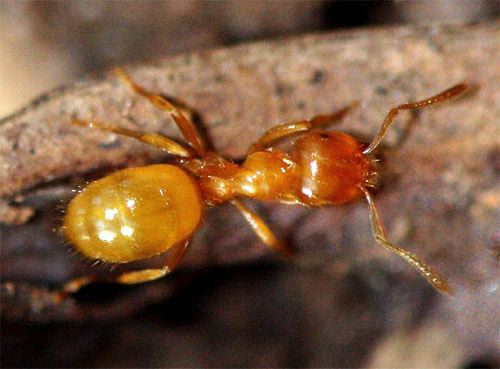
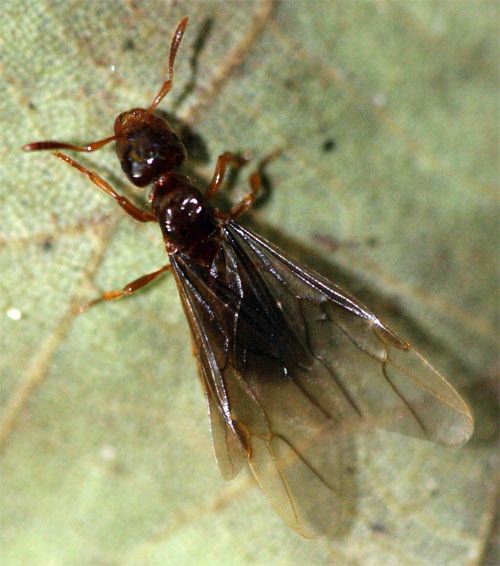




 Please report your
Please report your